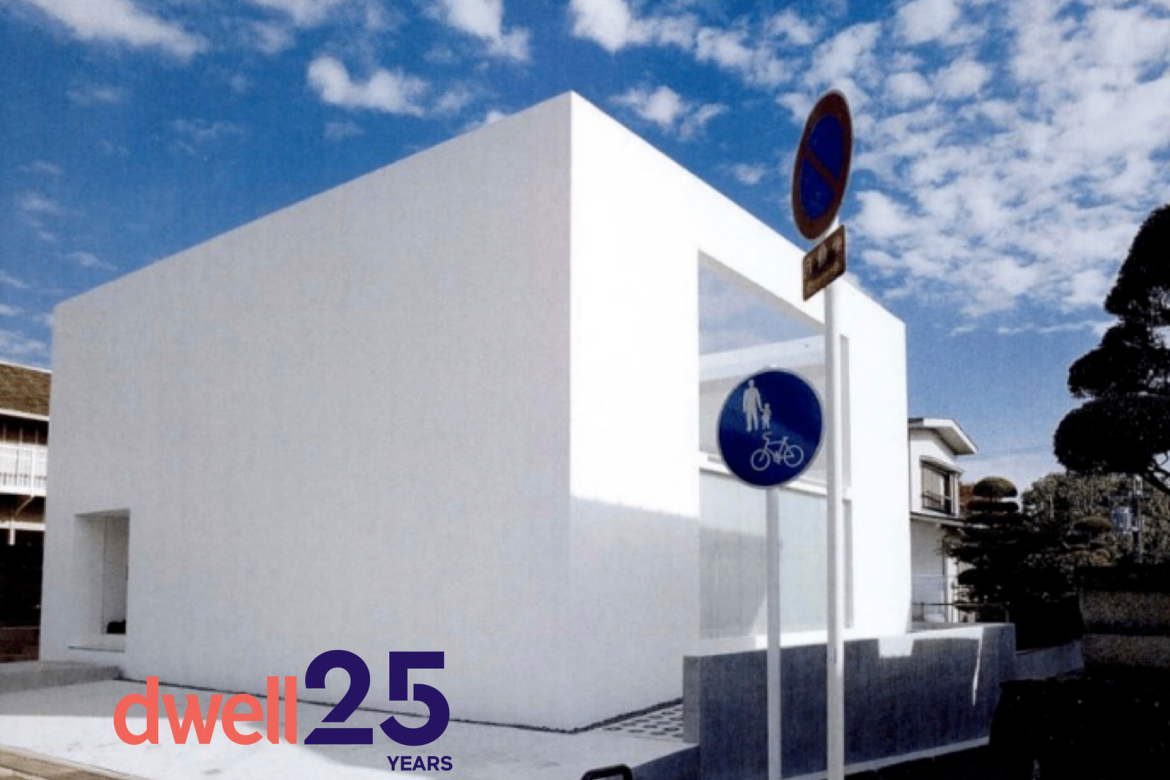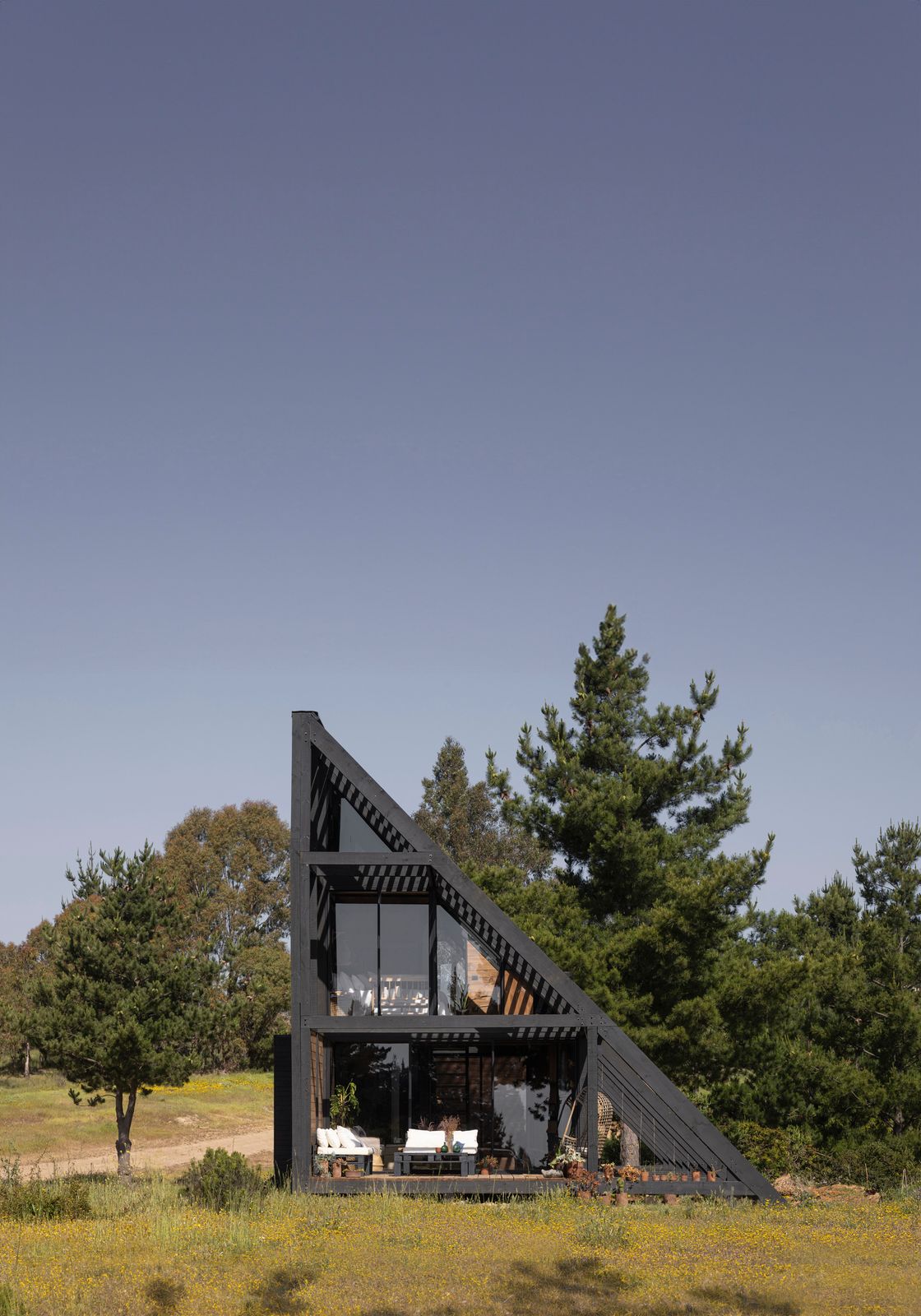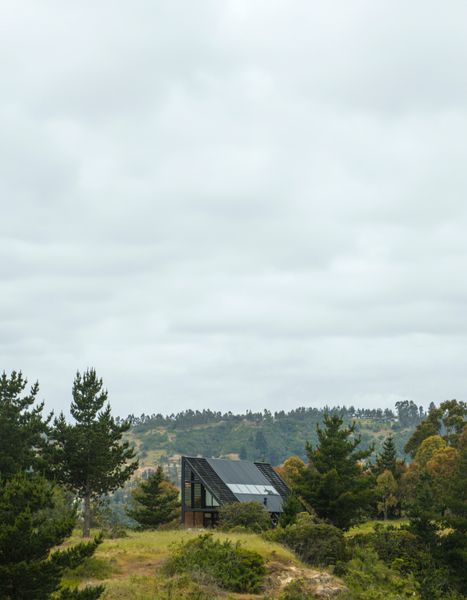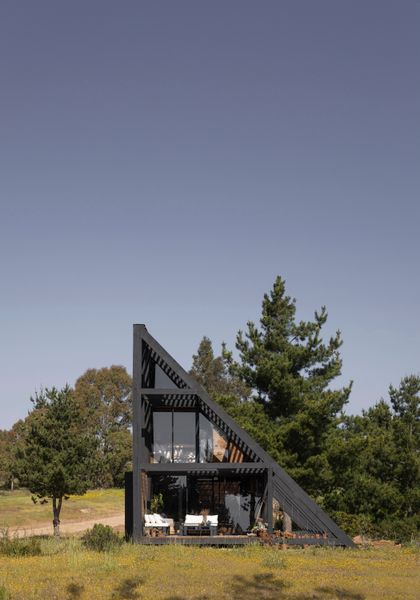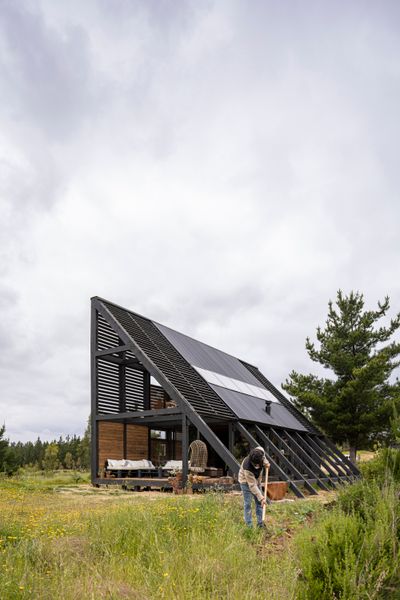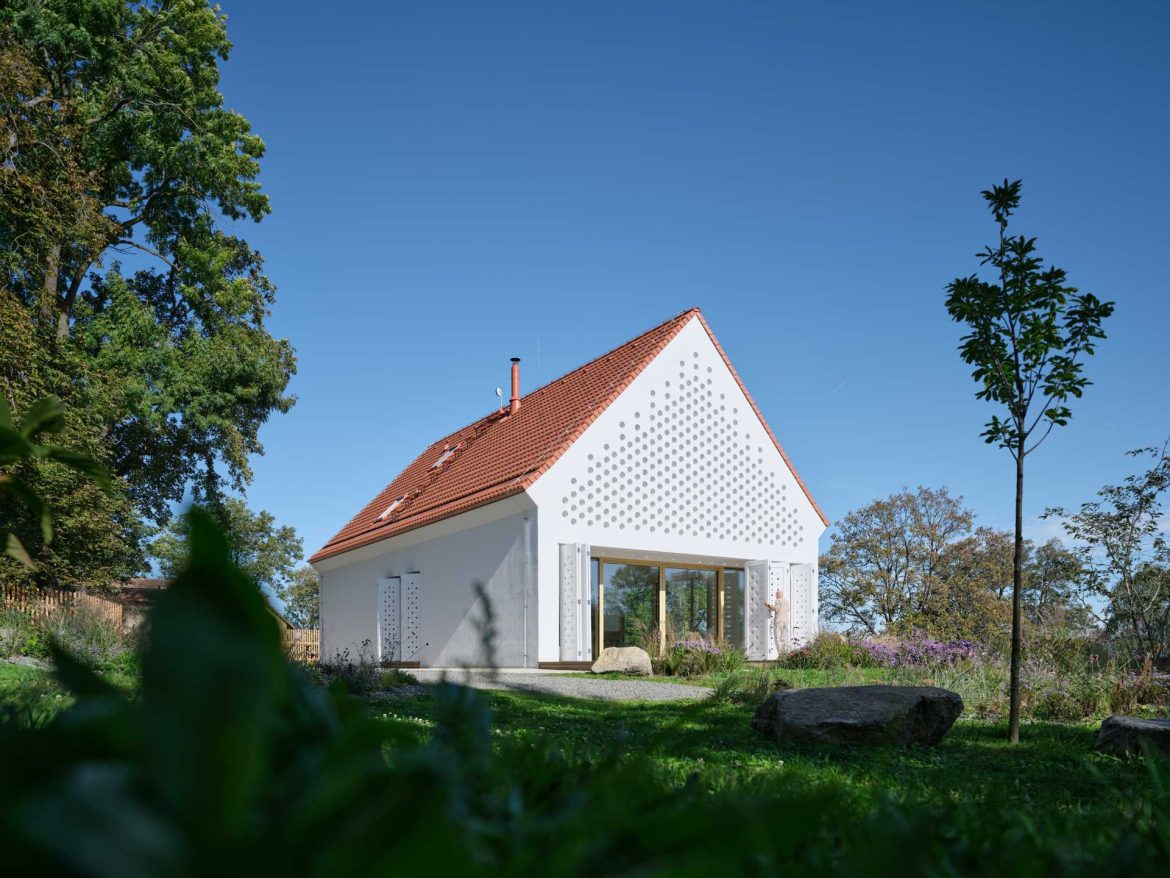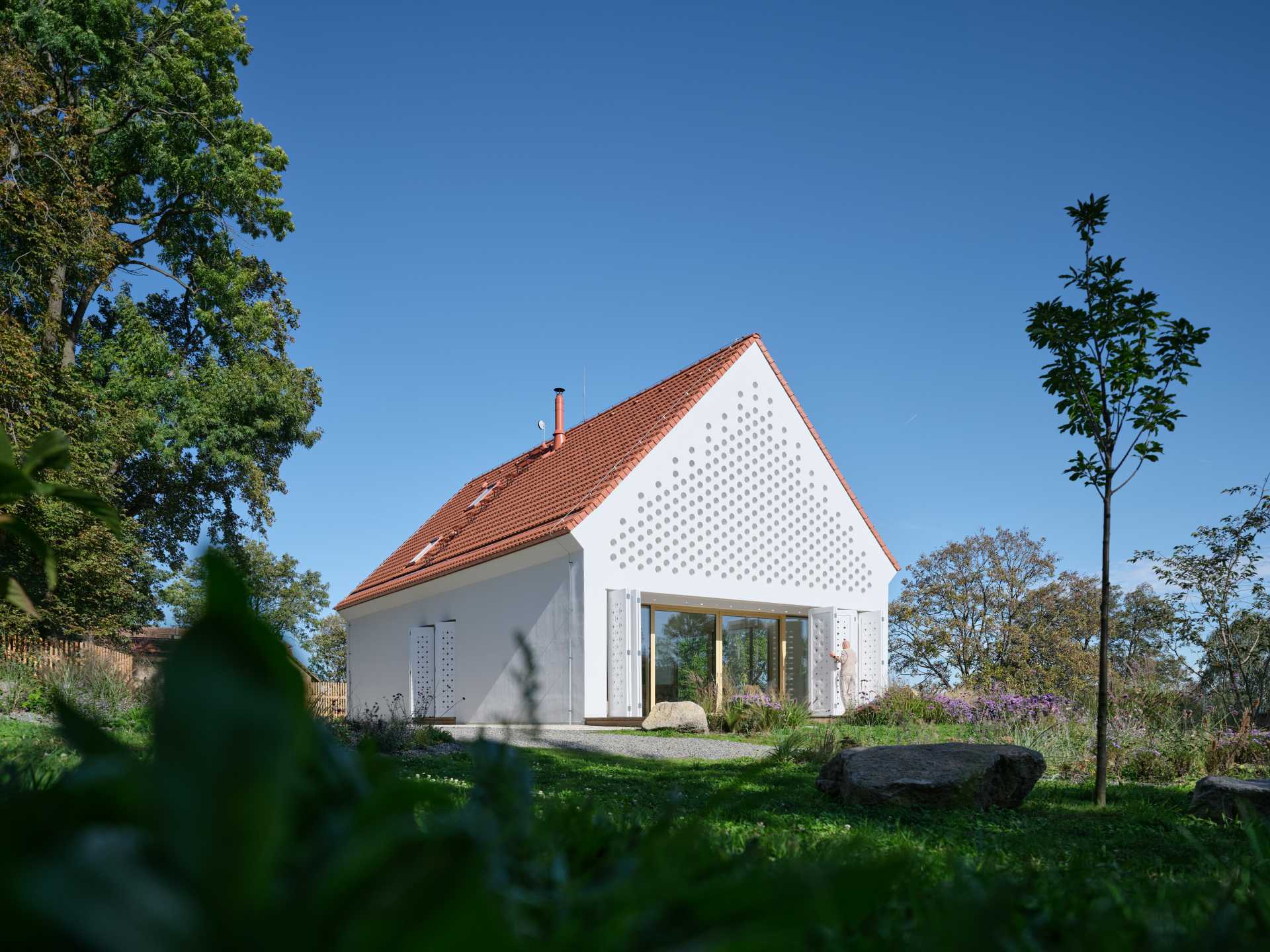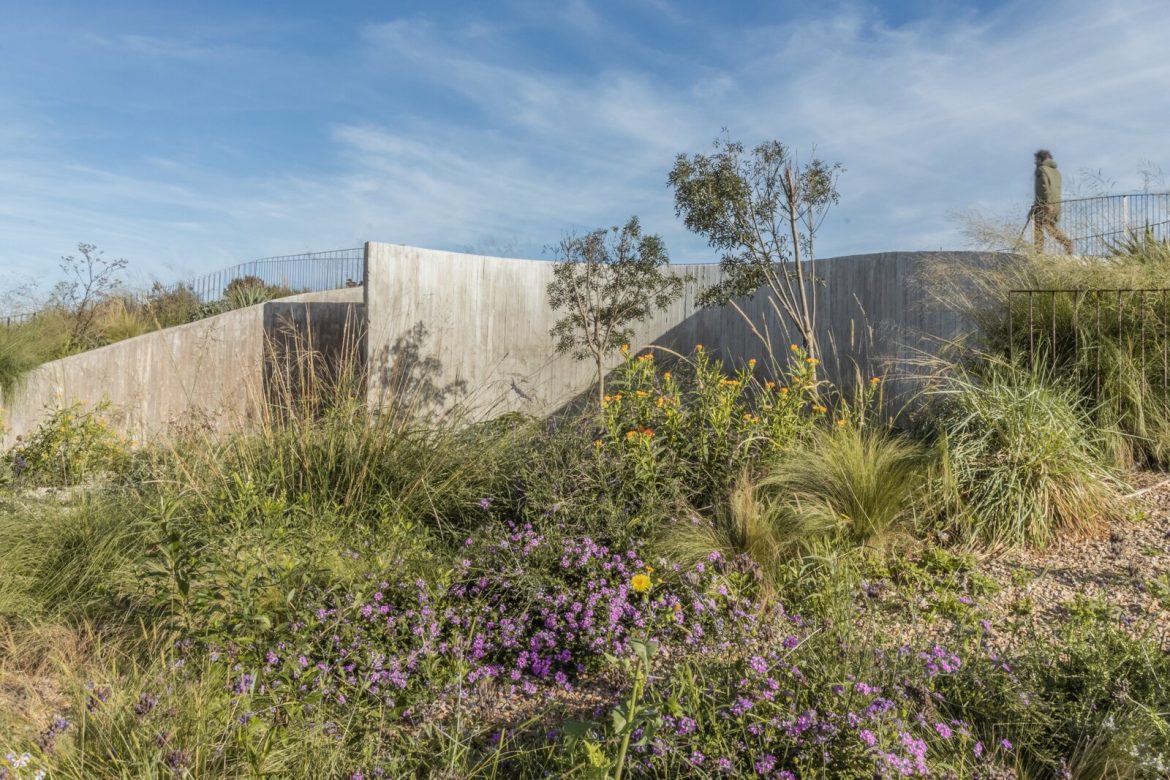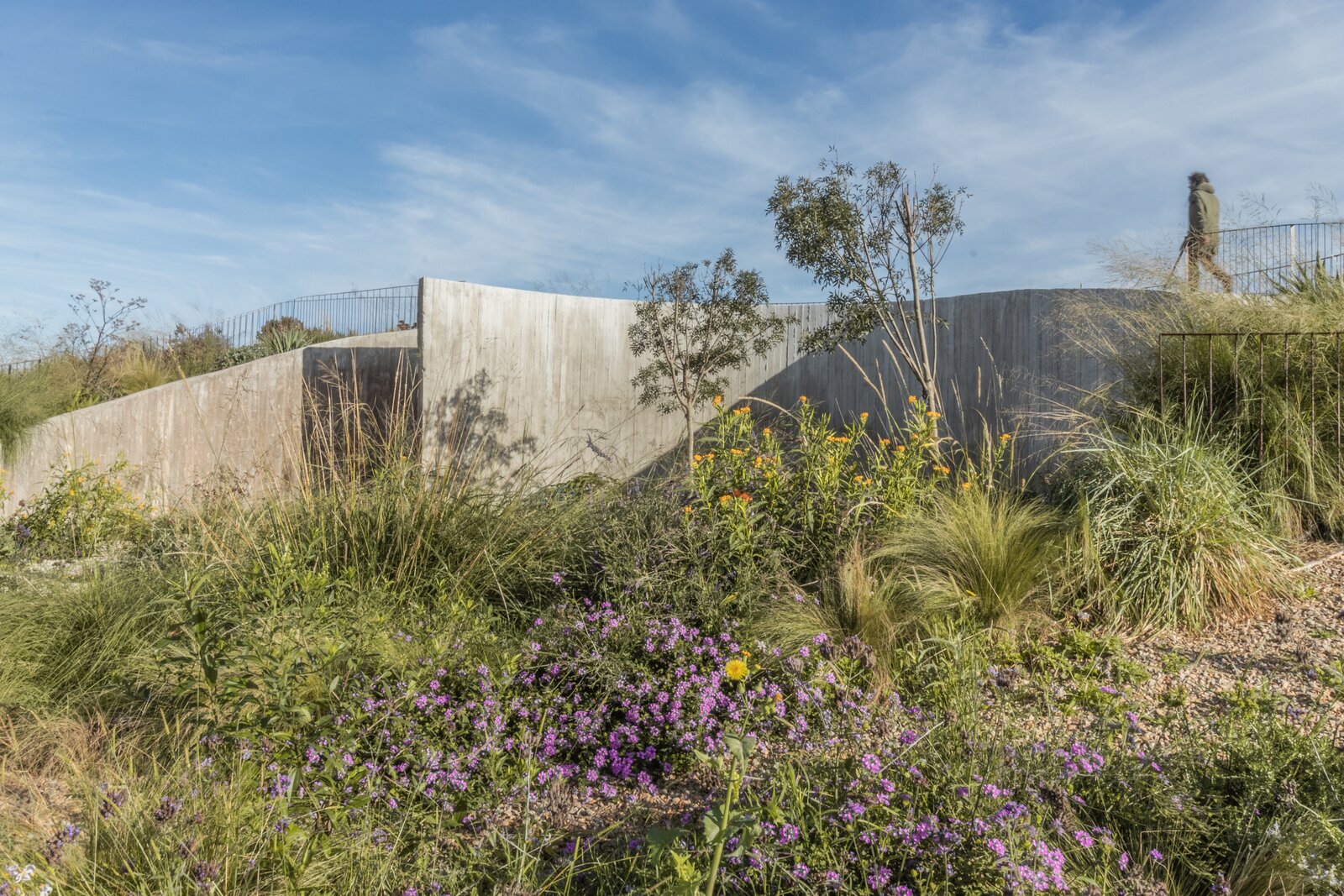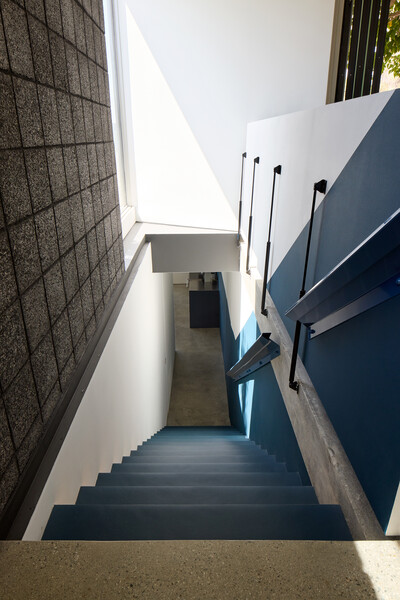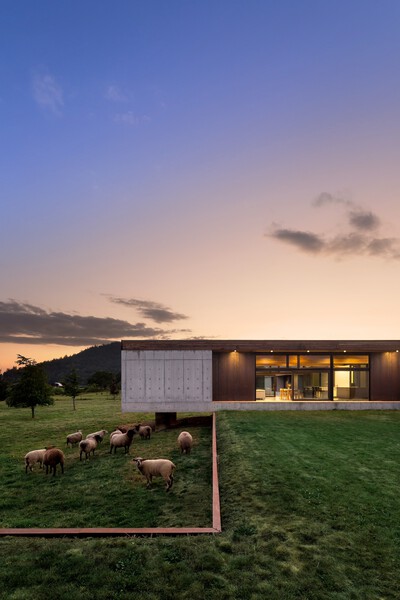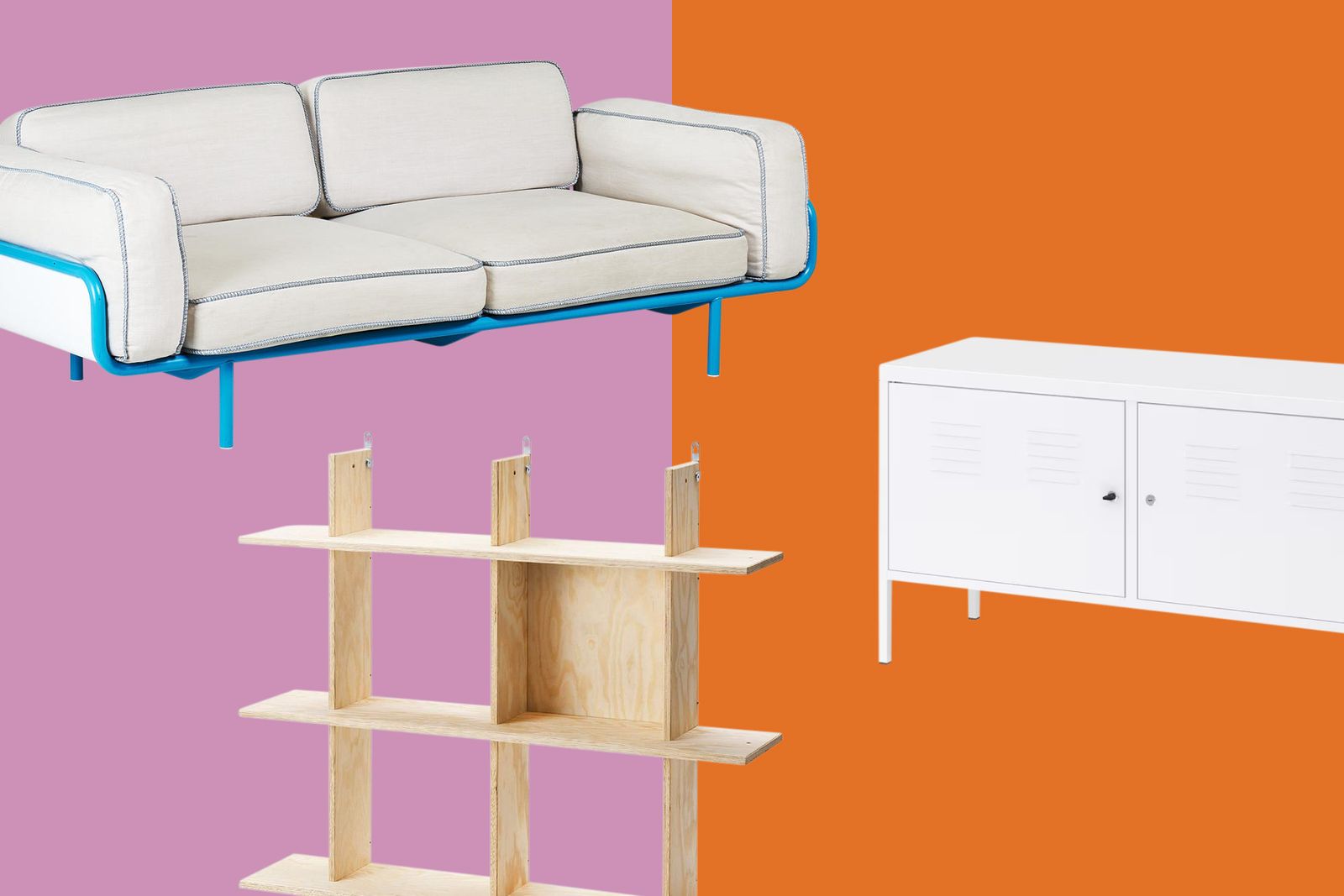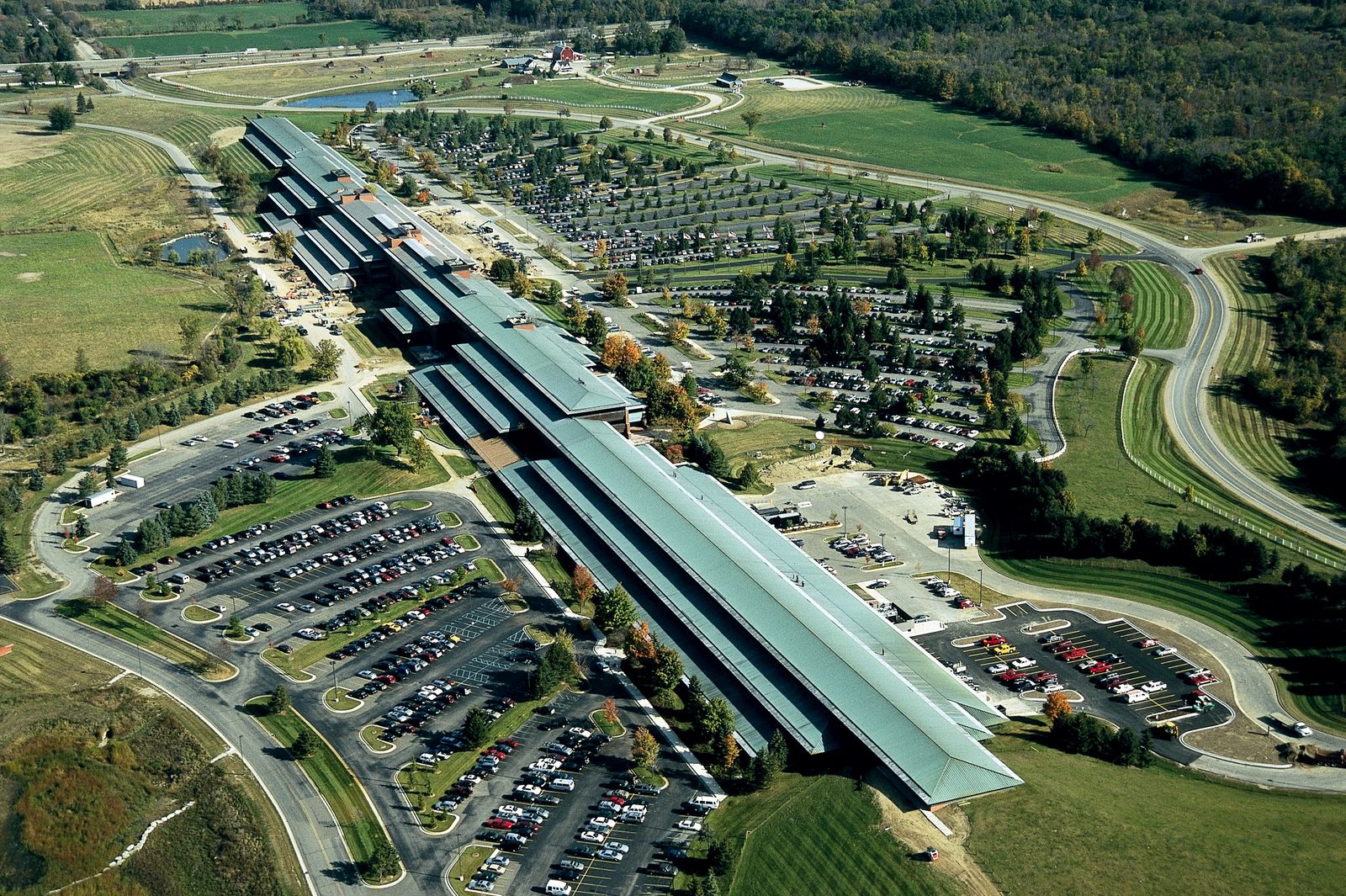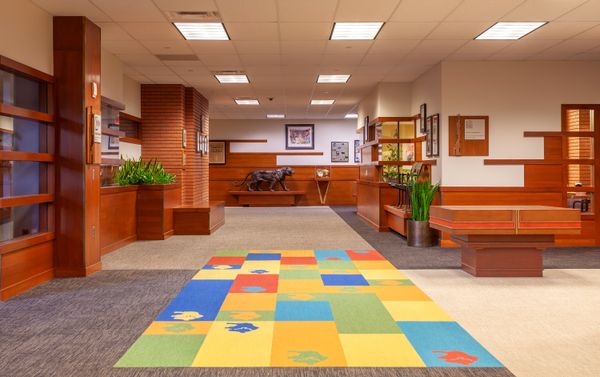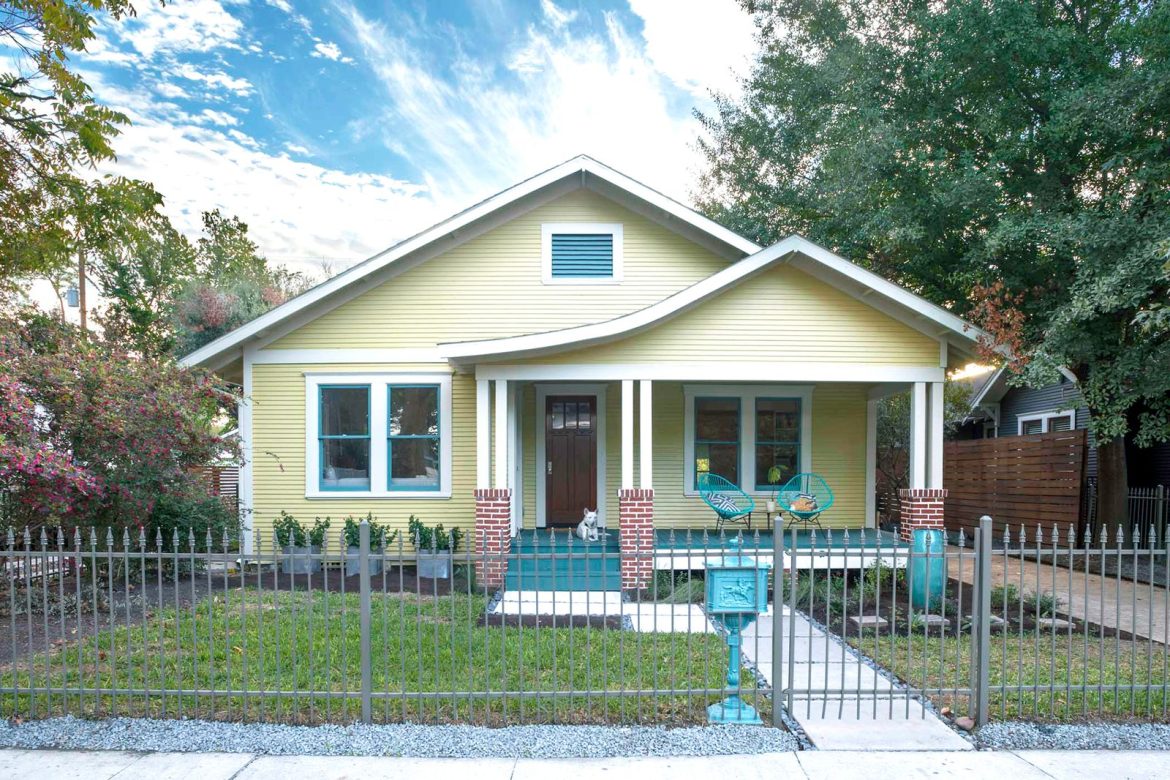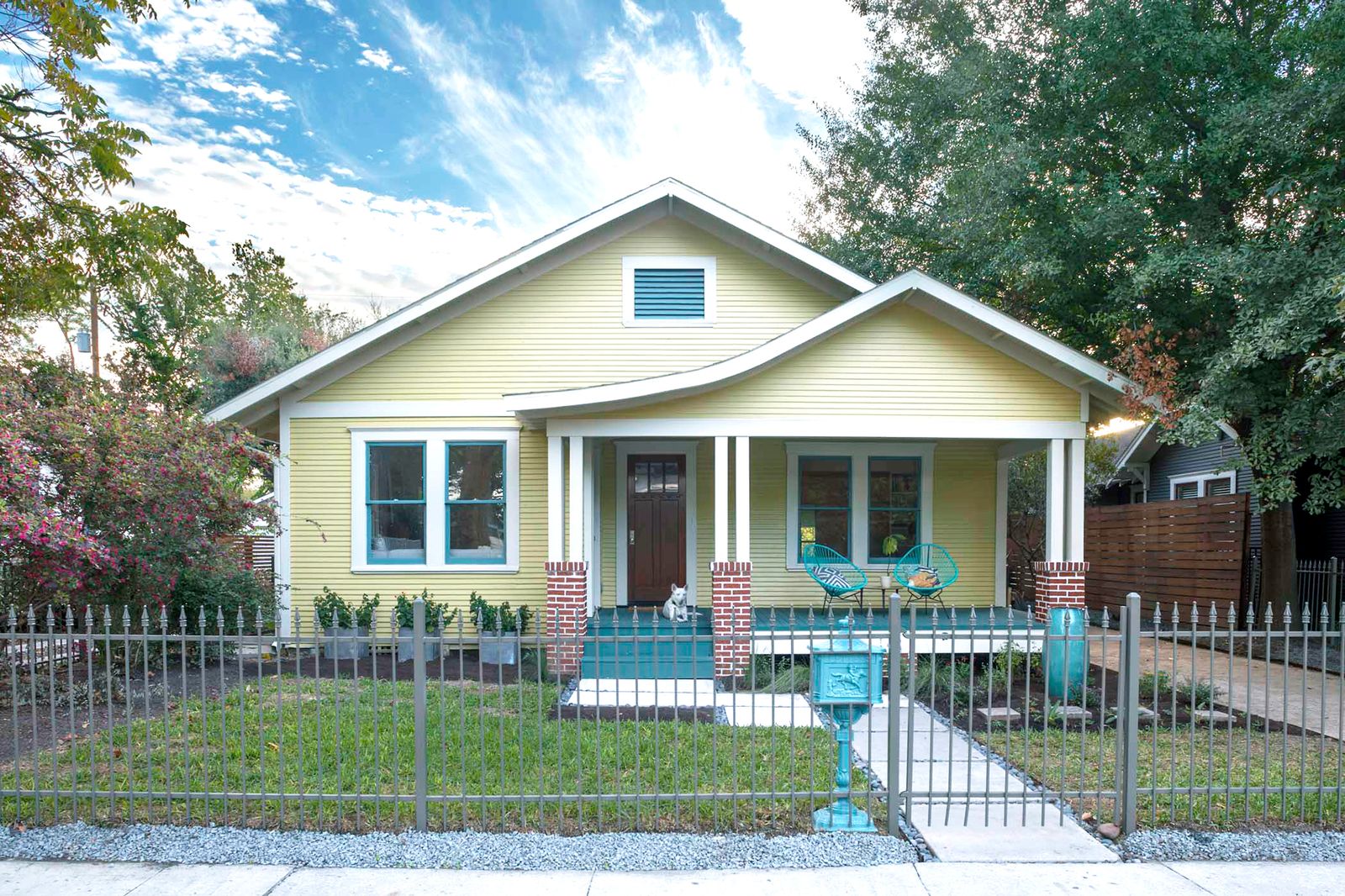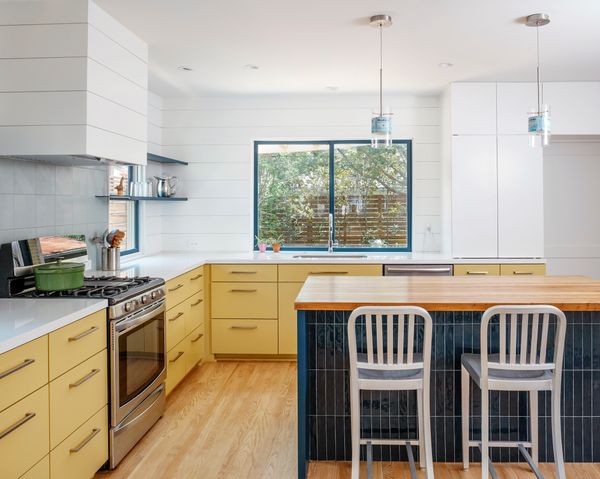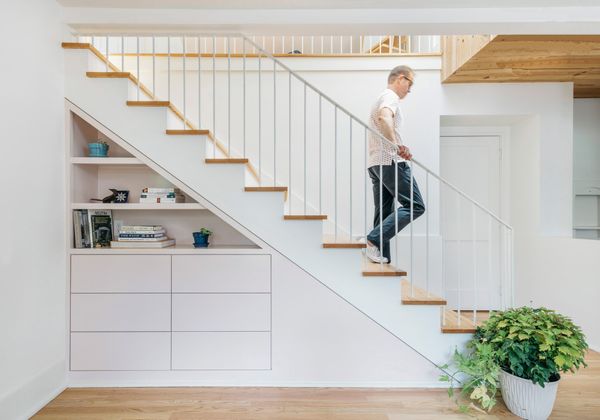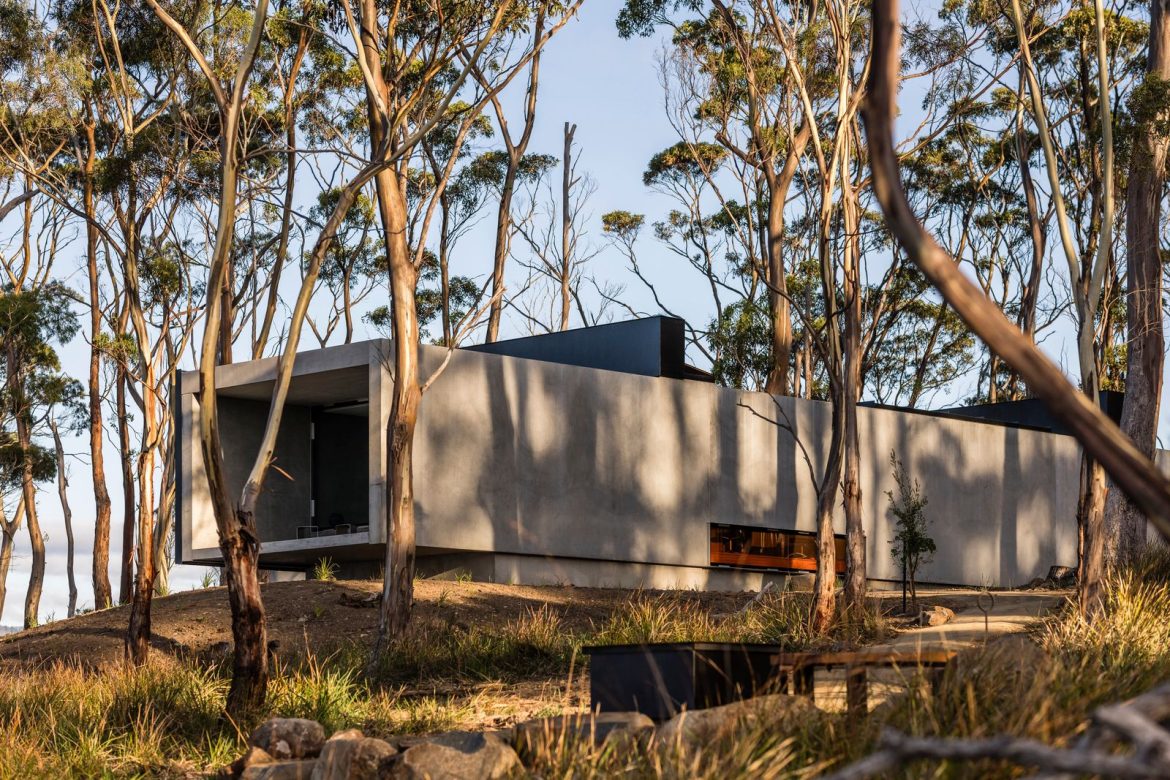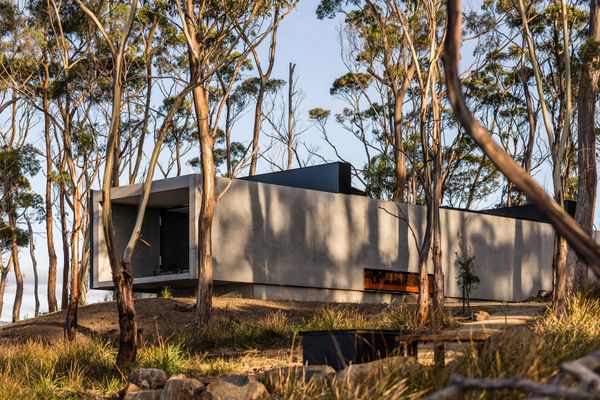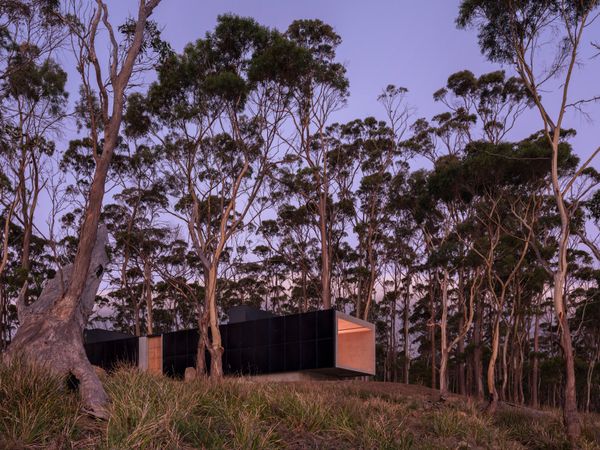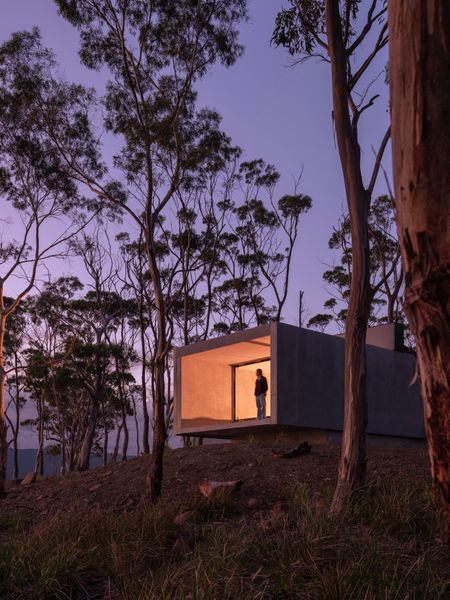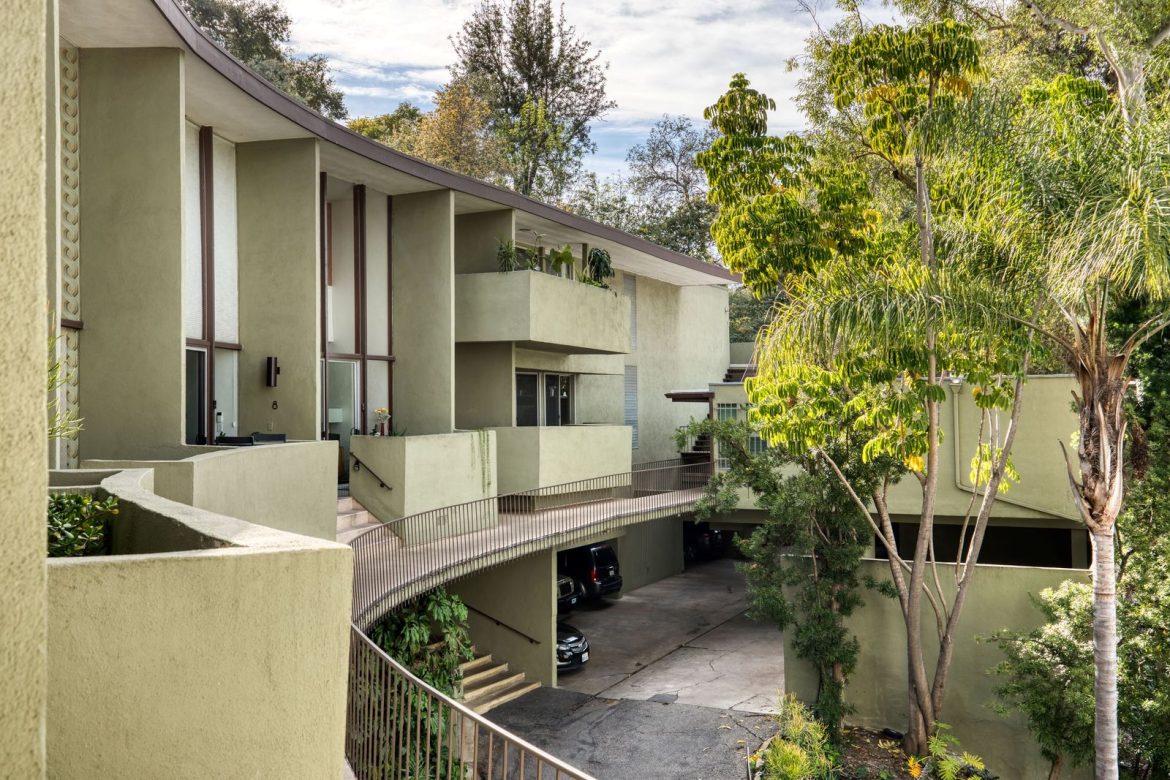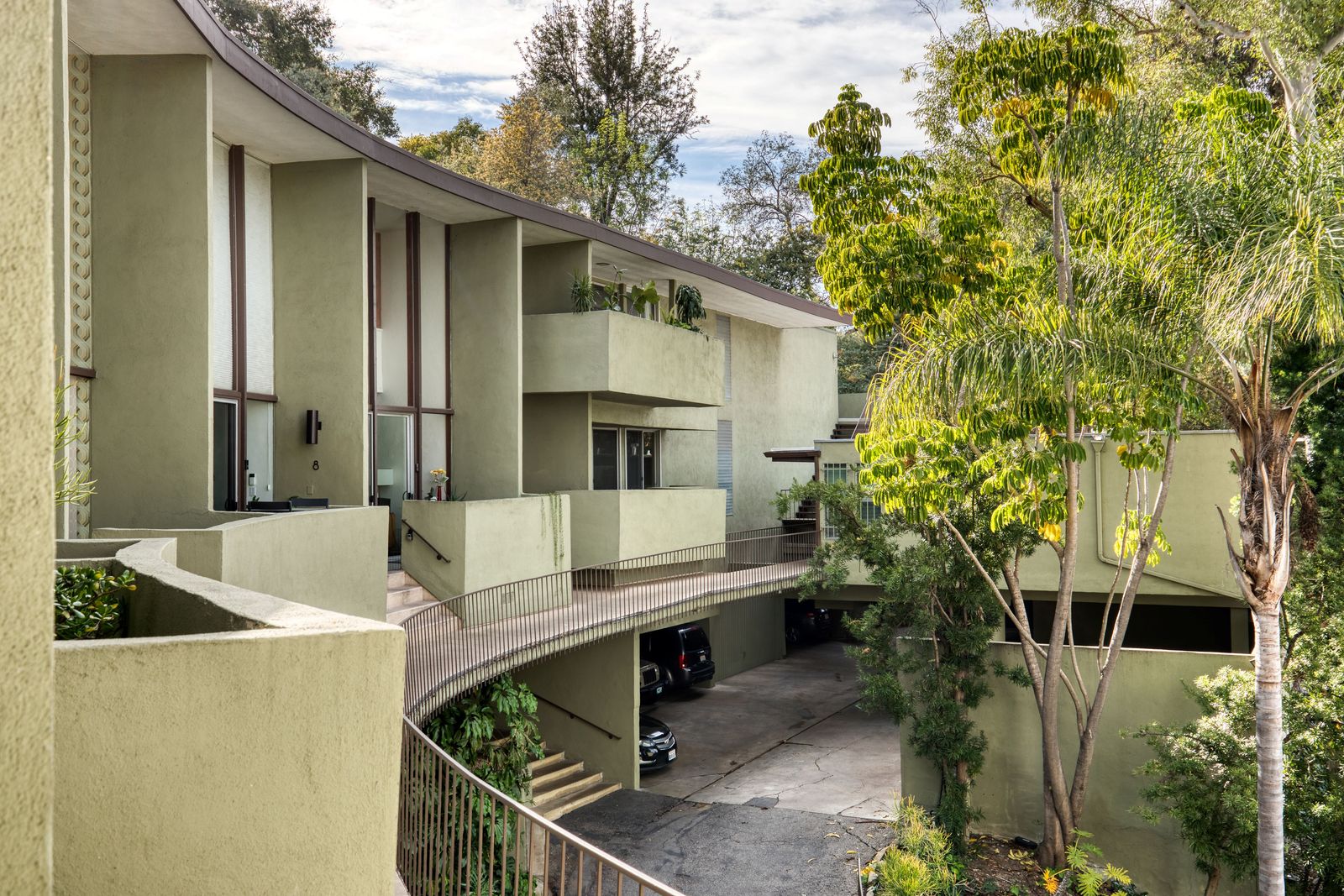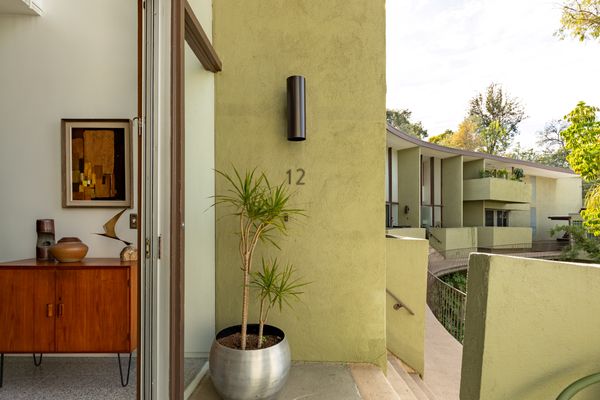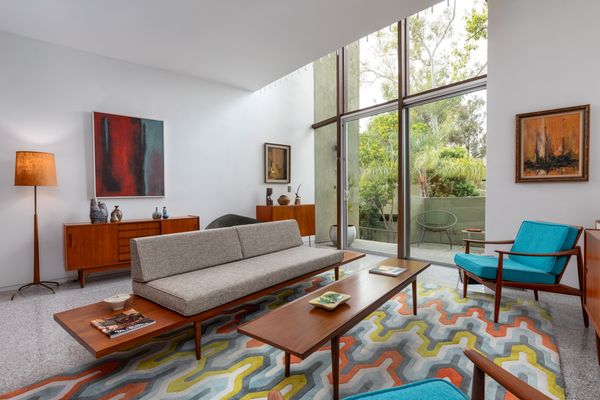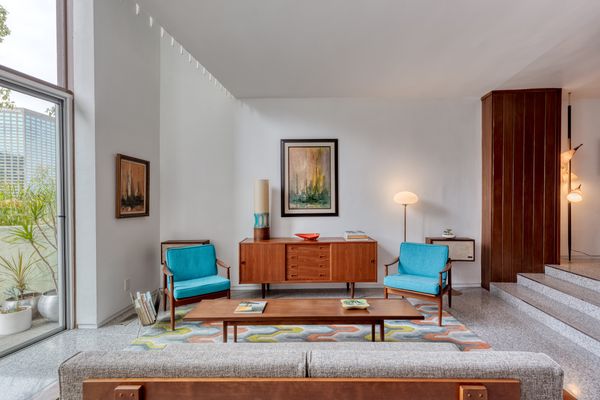When FOBA introduced a design-conscious alternative to the widely used “housemaker” market, they made a strong case for architecturally assertive standardized homes.
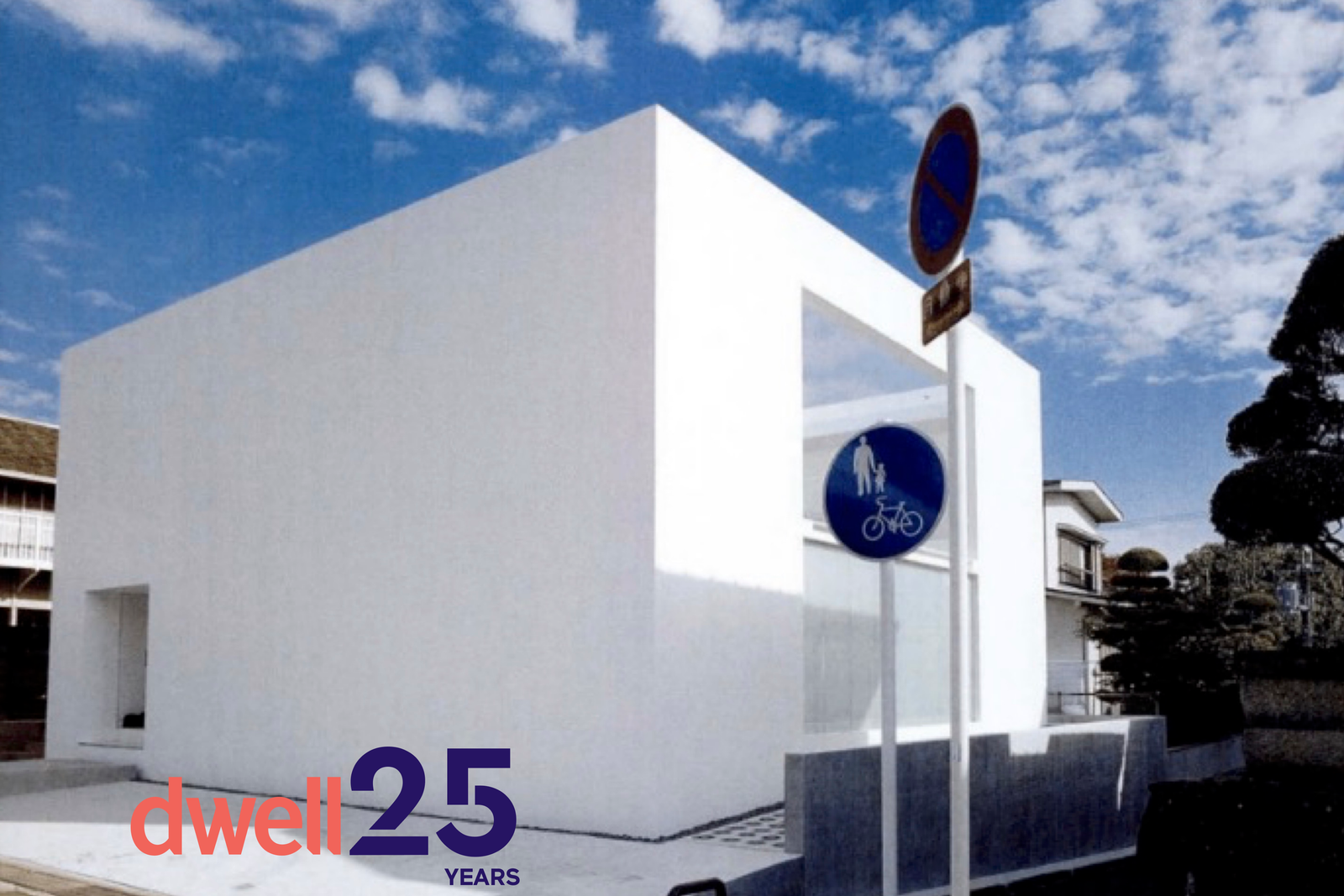
As a part of our 25th-anniversary celebration, we’re republishing formative magazine stories from before our website launched. This story previously appeared in Dwell’s June 2001 issue.
“I could care less about tatami,” 37-year-old graphic designer Shingo Fujiwaki says casually as he pushes a shock of long, black hair out of his eyes. Instead, when he had a chance to scrap his parents’s 30-year-old house with its traditional straw flooring and replace it with the home of his dreams, Fujiwaki went in search of an architect who could give him what he wanted: a blank, white shell. In Katsu Umebayashi, the 37-year-old head of the design firm FOBA, he found just the man. And, in Fujiwaki’s house, FOBA found what proved to be a perfect prototype for its new venture: FOB Homes, the architects’s foray into the market of the housemakers, whose kit-of-parts homes account for almost all new houses built in Japan.
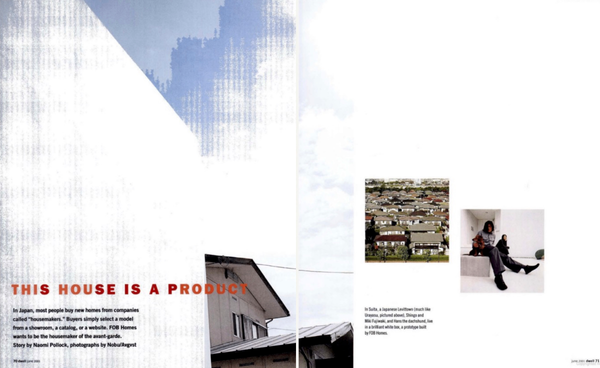
Photo: Nobu/Avgvst
A 12-person practice founded in 1995, FOBA is based in Uji, a tea-growing town outside of Kyoto. FOBA is known for its experimental houses and inventive commercial projects such as its own headquarters building, “Organ,” a snaking tube of continuous space complete with level changes and quirky angles.
The 1,376-square-foot house that FOBA built for Fujiwaki and his family sits on a corner site smack dab in the middle of Suita, a kind of Japanese Levittown on the outskirts of Osaka that was created at the time of the 1970 Expo (held nearby). Against the backdrop of the neighborhood’s drab cookie-cutter homes, the Fujiwakis’s house is hard to miss. It is a stark white concrete box—no parapets, no balconies, no ornament, no nothing. And, of course, there’s not a curve in sight. It doesn’t even have any windows aside from a low strip of glass on one side and a large plane of frosted glass on the other. Then there’s the facade: a brilliant white wall, unbroken except where a niche was carved out for the entry foyer. Though almost entirely shut off from the outside world, the house was not meant to be introverted or insensitive. On the contrary, “whenever you face a blank wall to a neighbor, it’s a favor,” says FOBA associate Tom Daniell. The walls politely protect the Fujiwakis’s privacy and that of their neighbors. And because they are set back from the property line, they also create welcome buffers of open space between houses. This is no small feat given the density in areas like this, where plots are small and houses are close together.
While this house may look modern with a capital “M,” the orthodoxy doesn’t extend much past its right angles and unadorned walls. The organization of this house and the way the Fujiwakis live in it are definitely homegrown. This becomes apparent the moment the threshold is crossed. Taking over where the exterior stone paving leaves off, polished concrete becomes the house’s interior floor. Nonetheless, the Fujiwakis exchange outdoor shoes for indoor ones before proceeding into the heart of the house: a double-height, combined living and dining room that somehow connects with almost every part of the building. In one direction it flows into a sleek galley kitchen, a stainless-steel Italian import, where the Fujiwakis can whip up espresso without dropping out of the conversation. In another direction it opens seamlessly onto an enclosed courtyard with glass doors that slide open to flood the room with daylight and fresh air (though the dog is the only family member to spend much time out there). A freestanding metal staircase connects to the second floor. But both primary bedroom, a modest affair with just enough space for a double bed, and dressing room, with its exposed hanging bar loaded with the Fujiwakis’s de rigueur black, white, and gray wardrobe, overlook the living area below. Even the upstairs bathroom, a narrow, skylit corridor lined with the most elegant fixtures money can buy, is linked to the main room.
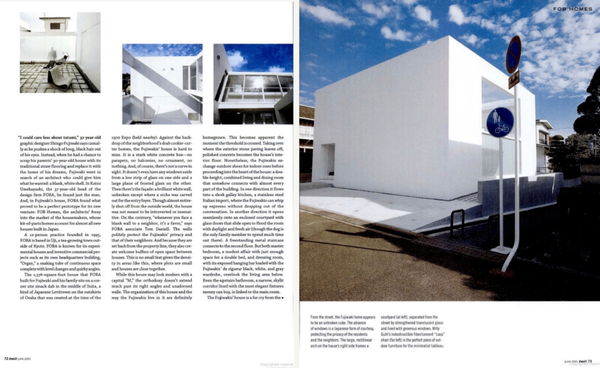
Photo: Nobu/Avgvst
The Fujiwakis’s house is a far cry from the imitation Western-style homes churned out by house manufacturers who build with Lego-like prefab pieces or even their upscale made-to-order cousins. If you buy a car, camera, or watch in Japan, there are loads of good designs to choose from, explains Fujiwaki. But housemaker houses are another story. “You have no choice—it’s bad design or nothing,” says Fujiwaki. True, they come in a vast array of styles and they can even incorporate a traditional tearoom, complete with the customary tatami mats and the decorative alcove known as a tokonoma, plus a pass-through kitchen all under one gabled roof. But design-wise their stock solutions, based on the Western ideal of separate rooms for separate functions, are criticized for being bland at best, and at worst, poorly suited to the Japanese lifestyle. “The only things most people decide on is which housemaker, how many rooms, and how much they’ll spend,” laments Umebayashi.
It’s not cutting-edge design that customers are after when they visit housemakers’s showrooms and websites. The lure of the housemaker house is that it is a known entity before ground is ever broken. Each one comes with the promise of being built on time and on budget. It’s also guaranteed: Should the synthetic slate roof leak, the company’s 24-hour hotline is always ready to provide service with a smile. And because everyone is doing it, there is never the worry of having a house that’s going to raise eyebrows. If the client wants a customized design statement, he can always hire an architect. Yet many prospective homeowners shy away from the incumbent risks of not knowing what sort of self-indulgent house an architect will concoct or how much it will actually cost. “Very few clients want a work of art; most want a life tool, a life container,” says Umebayashi. Between these two extremes of standardized housemaker homes and one-off, architect-designed creations lies the gap which FOB Homes plans to fill by offering a design-conscious alternative that tops the construction quality of the housemakers’s house but matches the price, which usually starts at $300,000 (not including land costs).
How can FOB Homes pull this off? By dividing the building process into six steps that provide the clarity and convenience of the housemaker’s formulaic method and standardizing the design process to limit client choices. Though FOB Homes has yet to fully utilize this system, its products so far have a similar look and are planned as continuous internal spaces (albeit with careful functional zoning) that are composed from a conceptual kit of parts. Enclosed outdoor spaces are also part of the package.
“We want to make living fun and satisfying.” says Mitsue Masunaga, the head of FOB Coop, a nationwide chain of 12 shops devoted to spreading the gospel of good design. Together with Umebayashi, her nephew, she is the driving force behind FOB Homes. Her shops, named after the shipping term “free on board,” stock a range of interior goods, both foreign made and local, and she is eager to add house designs to her inventory. “The thing that people want most is a house,” says Masunaga, “so I want to sell them.” So kitchens are open and inviting, storage is generous enough to conceal all manner of unsightly clutter, and bathrooms are the most sumptuous spots in each house. (The Fujiwakis’s bathroom features a miniature garden and a German-made Duravit tub.) This approach provides an image of the house and its organizational framework, but the rest can be tailored to meet the needs of the most persnickety clients. Even the signature white surfaces are just a starting point. Be it the art on the walls, the food on the kitchen counter, or, as at the Fujiwakis’s house, their forest-green canoe which sits outside, decoration and color come from the client.
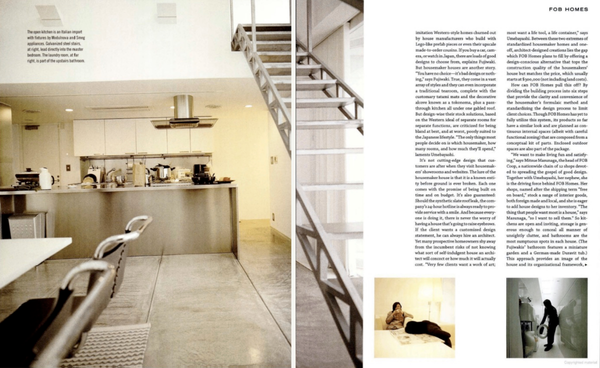
Photo: Nobu/Avgvst
See the full story on Dwell.com: From the Archive: An Experimental Firm Brought the Avant-Garde to Japan’s Factory-Made Houses
Related stories:
